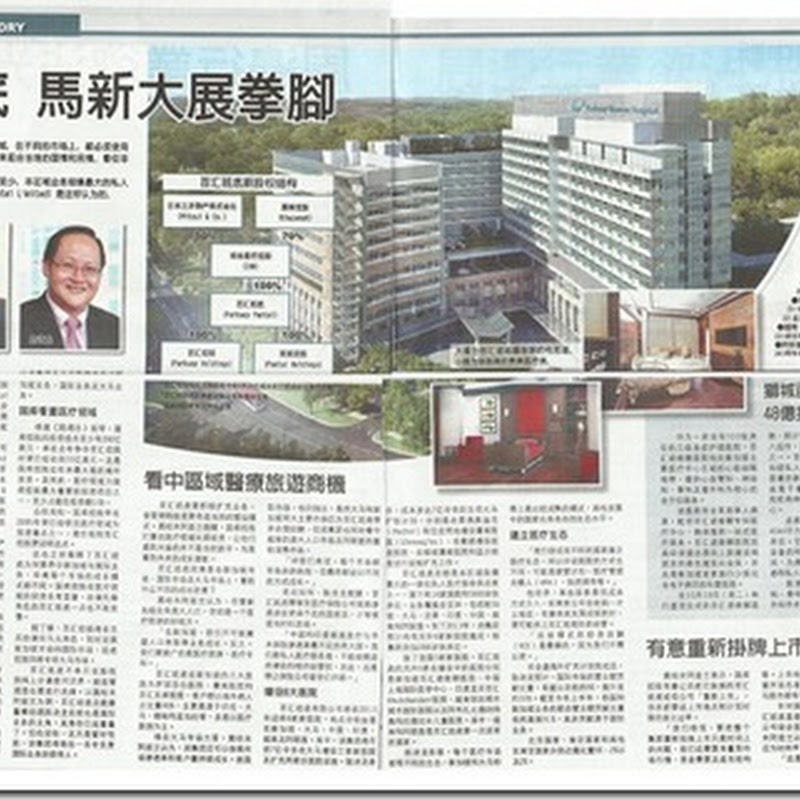Sources say Sime Darby, the lead contractor of the Bakun Hydroelectric Dam project, has put in a claim of rm700 million in relation to the project.
This is in addition to an earlier claim of rm708 million which has been mostly disbursed to the company.
If the claim is approved, the total cost of the civil works portion of the Bakun dam project will rise to rm3.2 billion from the original RM1.8 billion. This does not include the electrical and mechanical works and other related works such as land clearing prior to the flooding of the dam.
In total, it is learnt that the cost of building the dam is aboit RM8 billion. Sources say Sime is also requesting that the government drop all associated costs incurred pursuant to the delayed delivery of the project to its owners.
The owner of Bakun is Sarawak Hidro Sdn Bhd, a unit of the Ministry of Finance. It was mandated to manage the construction of the dam after the government took over the project from Ekan in the late 1990s.
Because of the delay in delivery, Sarawak Hidro has the rights to claim up to 20% of the original project cost from the contractors. The project was awarded to the Malaysia China Hydro JC (MCHJV) for RM1.8 billion in Oct 2002. Thus maximum amount Sarawak Hidro can claim from the MCH JV, which is led by Sime Darby is up to RM360 million.
Because of the delay in the civil works, the mechanical and engineering contractors have put in claims to Sarawak Hidro.
Under the terms of the contract, Sarawak Hidro has the option to the impose on the works contractor le by Sime, a back to back claim made by the mechanical and electrical contractors.
However, Sime, is seeking to have the back to back claim dropped because the delays were beyond its control. The new completion date that Sime is seeking to hand over the dam is Dec 2010.
Although Sime is only a member of the MCH JV, it has a lead role by virtue of its 35.7% stake in it. The MCH JC is between a group of Malaysian construction companies led by Sime and China Hydro Construction Co. The Chinese company has a 30% stake in the JV, while the remaining 70% is held by Malaysian companies.
Sime Darby’s subsidiary Sime Engineering is a 51% shareholder of the Malaysian consortium. Some of the other members are WCT Engineering, AZRB and MTD Capital.
The business of Sime Engineering was largely housed in Sime’s utilities and energy division, which has interests in oil and gas fabrication projects as well as power plants and is responsible for the Bakun project as well.
Since Jan 2010, the division has come under scrutiny because of huge losses in its oil and gas project in Qatar .
Sources say the losses could be as high as Rm1 billion. This is on the basis that all Sime’s claims are thrown out by the government. But because Sime is claiming RM700 million from the government and wants all claims against the company dropped, the losses could be contained within rm300 million.
But the problem Sime will face is justification as Sarawak Hidro officials have contended that there is no basis for the additional RM700 million claim.
Meanwhile Sime Darby Bhd will disclose findings of a taskforce set up to investigate its energy and utilities operations when it announces its third- quarter earnings on May 27 2010. The taskforce has been looking at all aspects of its energy and utilities division, including its engineering works in Qatar and civil works on Malaysia ’s Bakun hydro-electric dam.
It is understood the Government has agreed to reimburse Sime Darby for around RM700mil, leaving Sime Darby with around RM1bil to be dealt with, by some estimates.
Sime is also conducting engineering, procurement, fabrication and installation works at the Bull Hanine and Maydan Mahzan fields for Qatar Petroleum. A provision of more than RM100 million may be required on this project, it was reported on Feb. 20 2010.
Sime Darby’s energy and utilities division recorded an operating loss of RM110mil in the second half of its financial year ended Dec 31, 2009, compared with a profit of RM56.3mil previously. But within this division, its oil and gas and engineering divisions’ losses alone totalled RM201mil. However, Sime Darby said this loss was due to overruns from another project, namely its RM2.1bil Maersk Oil Qatar (MOQ) project.
Sime Darby recognised a project loss for MOQ amounting to RM210mil (including the impact of foreign exchange losses). As a result, the oil and gas segment recorded losses of RM201mil in 1HFY2010.
Assuming the cost overruns have taken place in the Bakun project, the group will still need to deal with a significant amount of provisioning or expensing, which could seriously dent its profits for FY2010.
To recap, Sime Engineering, a unit of Sime Darby, was awarded the civil works for the Bakun project in September 2002 at a fixed lump-sum price of RM1.8bil. It has been reported that Sarawak Hidro Sdn Bhd has approved a variation order for RM700mil for the Bakun project. Sime Darby did not confirm or deny this. Sarawak Hidro is a wholly-owned subsidiary of the Ministry of Finance Inc Malaysia and entrusted to develop and manage the Bakun project since May 2000.



















































